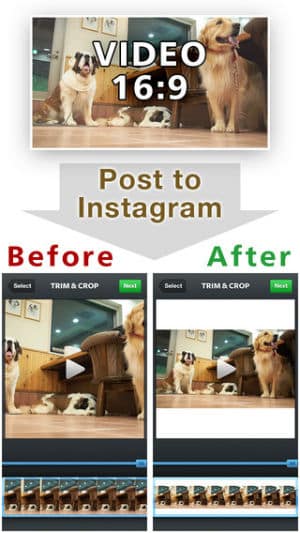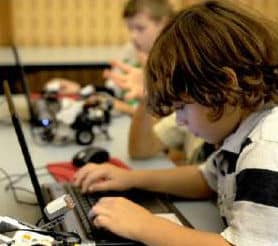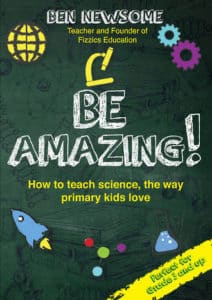
Instagram in the science classroom
As we all know, students love smartphones! Why not take advantage of the content creation apps available on smartphones to get students to create informative short science videos they can upload onto Instagram? Every day in your classroom students gain new insights and in doing so create their own interpretation of how the world works, this is a fantastic opportunity for students to use their devices as a creative outlet to share their knowledge in a medium they love.
So, how could Instagram be useful for science teaching?
Documenting learning
With a point of the camera and using some simple content creation apps, your students could be documenting the science experiments, challenges and questions that are raised in your classroom for other classes to learn from, plus they’re a good reflection tool in their own right.
Creation of student challenges
By using Instagram as the medium, you could set a science communication challenge to your students whereby they have to explain a given concept to their peers. You could run this as a competition across your school in a similar way to Alan Alda’s Flame Challenge, whereby people from around the world compete to create a compelling explanation of a science topic that an 11-year-old could find interesting and entertaining (eg. what is energy?). In fact, why not enter your class to be judges in this year’s flame challenge?
Using BYOD in your classroom
Smart devices are not going away any time soon. Given that many students carry these in their pockets and bags anyway, you might as well take advantage of the powerful apps that these devices can use. Additionally, implementing Bring Your Own Device (BYOD) in your classroom teaches students how to use their phones to produce useful content for others to learn from, rather just simply being consumers of content made by other people. Using smart devices in your classroom helps teach students to use everyday technology in a science setting, a direct curriculum requirement in many syllabus documents.
Tools for creating videos for Instagram
At the time of writing, Instagram allows you to publish videos that are to 60 seconds in length. Whilst you definitely can get students to upload raw video to Instagram with no editing at all, it’s nice to teach students how to use a couple of apps to make their science video better. Of course, with free apps comes a limited scope of editing, however here are two free apps that could come in handy…
Squareready for Video
An issue with working with Instagram is that the videos are square rather than in 16:9 ratio. If you’re not sure how to crop your video to a square aspect or if you don’t know how to add top and bottom borders you can still use Square Ready for Video. Like many free apps, it does have in-app purchases however you can pay to have them removed. You will need to convert your files to .mp4 format.

Square ready for video screenshot
iMovie
This free native Apple software will allow students to quickly stitch together short clips into a longer video sequence, as well as create titles, put in special effects, layered soundtracks plus split screen and picture in picture layouts. The usability and versatility of iMovie plus the ability to sync your files with your iCloud for other devices to access makes the program intuitive to use.
Magisto
Available on iTunes and Google Play, Magisto is a free video editing app does the editing for you (!). Simply select the raw video file, add a soundtrack and a title and the editor stitches it all together.
Dropbox
If you’re creating videos on your PC it can be difficult to get these files to Instagram. A common workaround is to use Dropbox instead. Convert your video file to a .mp4 file and then upload it to Dropbox. Now on your smart device open Dropbox, select the .mp4 file you uploaded and then export it to Instagram.
Re-purposing video content

Student using a laptop
The raw science video created by students doesn’t just have to reside on Instagram. Your students could upload the same video to your classroom blog or pass it across to you upload onto your classes YouTube or Vimeo account. Also, in a previous post, we had discussed the use of 6.5 second videos using Snapchat as well. Snapchat has become a major social media outlet for students and its popularity cannot be ignored. In this post by the University of Ontario, 4 teaching ideas for using Snapchat are discussed where you might consider how to incorporate stories and classroom content into your science teaching practice. Of course, there are significant issues around how content created on Snapchat disappears once viewed which subsequently opens up the platform for potential cyberbullying and other inappropriate behaviours. As such, it is highly recommended that you discuss the pro & cons of this platform with your school administration first.
So, with the above in mind… what science activity could you get your students to document in your classroom? It doesn’t have to be a classic science experiment either, perhaps you could showcase snippets of an in-class STEM pitch competition just like Shark Tank! No matter what you choose, make sure you adhere to your school’s social media policies and as always that the activity fits with the planned scope and sequence of the unit of work you’re studying. Above all, make sure the students have fun with it!
Happy teaching,
Need some stuff to record? Check out these free science experiments!
NEW Primary science teaching book!
“Be Amazing! How to teach science, the way primary kids love”



























Comments